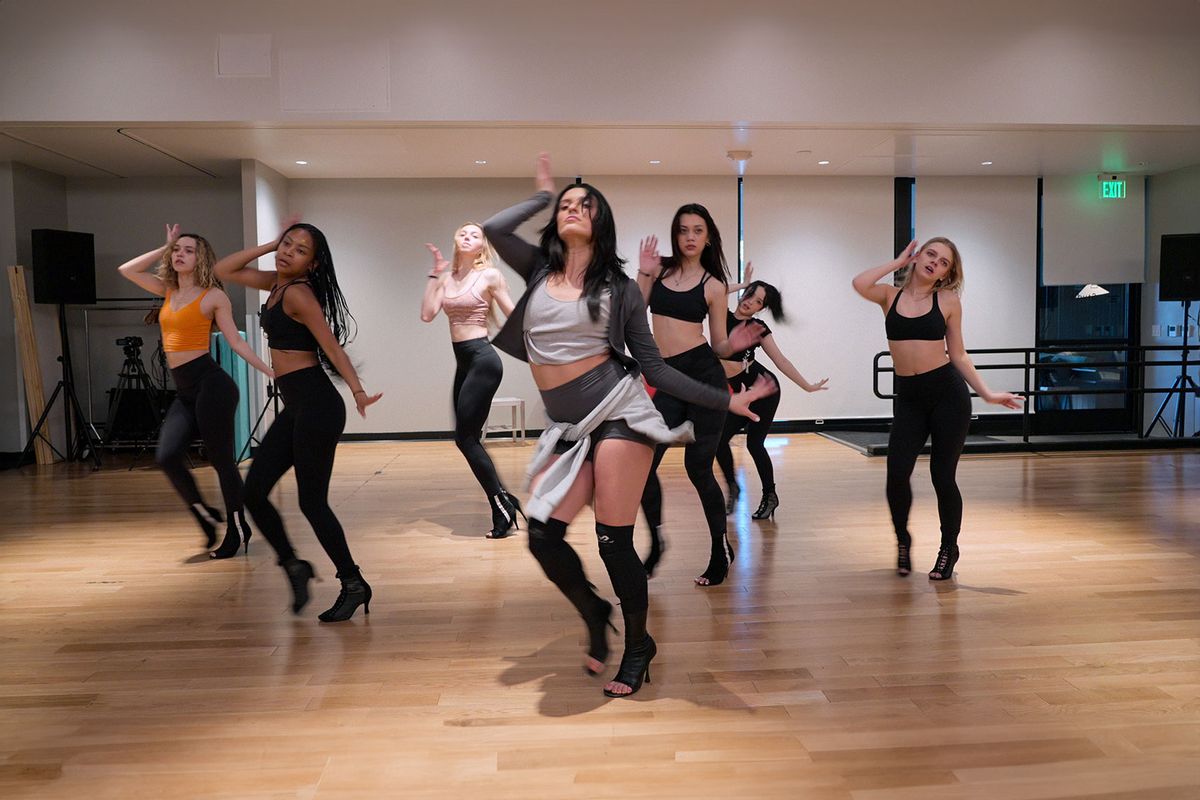High heels are uncomfortable. No matter the size of the heel or the shape – they tend to be a contraption created to cause the people who wear them pain. But many in our society have come to accept that beauty is pain and in “Pop Star Academy: Katseye,” that means dance is pain too.
In the eight-part series, 20 ambitious young women undergo a rigorous K-pop training program to attempt to clinch a sought-after spot in a new international girl group created by the collaboration of K-pop machine company HYBE and an American record label Geffen.
The girls’ talents in dance, singing and performance all range in skill level – from beginner to professionally trained in their specific crafts. Excellent vocalists may only have dance experience from copying TikTokers. Trainees schooled in ballet from childhood may not know how to control their pitch. As the show progresses, so do the girls and their skills, and the trainees’ instructors emphasize that becoming a star takes endless dedication: hours of daily practice, physical stamina and mental fortitude.
However, one of the aspects of their training involves learning how to maneuver and dance at elite levels . . . in heels. Nikky Paramo, one of the dance instructors and an industry veteran who performed with Britney Spears on tour, emphasizes how challenging this skill is, adding another level of physical complexity to a routine.
While teaching the girls a new routine, Paramo says, “People just expect women to be able to dance in heels. They’ll be like you know, ‘I could just throw heels on and do a routine.’ It’s not like that. Good luck.”
She explains, “You’re constantly forward on your toes so you’re just straining your Achilles. It’s a lot to ask of your body.” The series shows how the trainees with the lowest skill level in dance only focus on the moves, whereas those who attain higher levels can add heels to their practice routines.
Paramo says she’s attempting to teach the girls how to quickly improve their skills, “while in three-inch heels and some of them have never worn heels before in their lives.”
The reality is that wearing high heels just walking around in everyday life can increase the risk of long-term health issues. The Conversation found that consistently wearing heels can lead to an “increased risk of bunions, musculoskeletal pain and injuries to the wearer. Some of these injuries, such as ankle fractures, were serious and required hospital attention.”
Ultimately, dancing in heels is a risk that dancers themselves seem to understand.
However, for dancers, this risk increases further. Dance doctors like Sajid A. Surve, a co-director of the Texas Center for Performing Arts Health and a professor at the University of North Texas Health Science Center, stresses the importance of understanding heels don’t just affect women’s feet but target other points in their bodies.
In an article from Doctors of Osteopathic Medicine, Surve explained, “High heels put the foot at an angle and pull muscles and joints out of alignment, so the effects aren’t limited to the feet. . . . It’s not unusual for people who spend lots of time in high heels to have low back, neck and shoulder pain because the shoes disrupt the natural form of the body.”
Additionally, a study that tracked a group of female dancers in heels during an hour class which included a 10-minute warm-up, 20-minute exercise and 30 minutes of choreography found increased levels of muscle tissue degradation.
Despite all these clear concerns and long-term effects on the body, there is hope for all women who wear heels, particularly the ones who dance in them.
According to Surve, stretching calves will loosen the hamstrings and that will work to bring relief to the pain from wearing and performing in heels. Stretching before and after long periods of wearing heels and allowing some breaks during time spent wearing the shoes should help with the long-term effects. One video from the American Osteopathic Association breaks it down:
It’s important to note that the type of shoe a person wears also determines the level of comfort and pain they will experience. Suave noted that the slope of the shoe is more crucial than the heel height. A comfortable, supported heel should allow a person’s weight to be evenly distributed. Therefore platform soles or thicker heels could help. But in the docuseries, the dancers wear narrow-pointed, thin stiletto heels that aren’t necessarily the safest to dance with and increase the risk of injury. Instructors in the show emphasize that to improve performance with heels, dancers should work on strengthening their core.
When it comes to the performance expected of pop stars, dancing in heels are seen as a necessity. Paramo said, “With heels the better technique you have, the quicker you’re going to move up,” citing that 90% of female artists wear heels while performing.
Ultimately, dancing in heels is a risk that dancers themselves seem to understand. It’s not even just heels that pose an issue in dance – it’s footwear in general. There’s literally a niche, ASMR corner on TikTok on ballerinas showing their followers how to break in their new pointe shoes so they’re more comfortable to wear.
If audiences learn anything from the rigors of the training seen in “Pop Star Academy: Katseye,” it’s that dancing in heels is no easy feat. Young, female dancers should be respected for the efforts they put in but also protected from permanently causing injury to their resilient bodies for their well-earned moment in the limelight.
“Pop Star Academy: KATSEYE” is currently streaming on Netflix.
Read more
about this topic
